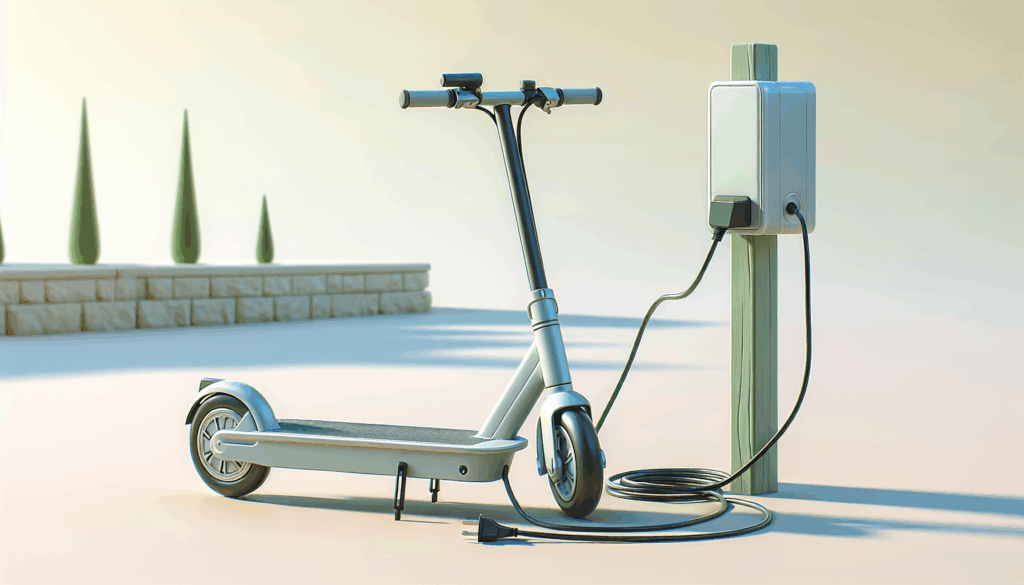
In recent years, electric scooters have surged in popularity as a sustainable and efficient mode of transportation. At the heart of these modern marvels lies the lithium ion battery, a key component that not only powers the scooter but also defines its performance and longevity. Understanding why we rely on lithium ion batteries in electric scooters is crucial for any rider looking to maximize their scooter’s potential. This blog explores the importance of battery health, the necessary care for ensuring its durability, and why annual battery load testing is essential for optimal performance and safety.
What Are Lithium Ion Batteries?
Lithium-ion batteries are a type of rechargeable battery that has become the preferred choice for many modern applications, especially in electric scooters. These batteries function through the movement of lithium ions between the cathode and anode during charging and discharging. Their lightweight design, high energy density, and ability to hold charge for extended periods make them ideal for powering electric scooters. As cities aim for sustainability and low-emission transport, lithium-ion batteries have emerged as a crucial technology, enabling longer rides and enhancing the overall performance and efficiency of electric scooters.
When it comes to battery health, understanding how lithium-ion batteries operate is vital for maximizing their lifespan. The efficiency of these batteries can diminish over time due to factors such as temperature fluctuations, charge cycles, and improper maintenance. Therefore, it is crucial for electric scooter owners to learn how to care for their lithium-ion batteries to ensure optimal performance. Regular practices include avoiding extreme temperatures, maintaining a charge level between 20% and 80%, and getting the battery load tested annually. This not only helps in prolonging battery life but also promotes safer and more reliable rides on the electric scooter.
The Role of Lithium Ion Batteries in Electric Scooters
Lithium ion batteries play a crucial role in the operation of electric scooters, serving as the primary source of power. Known for their efficient energy storage and lightweight design, these batteries allow for longer rides and faster charging times compared to traditional battery types. The popularity of lithium ion batteries in electric scooters can be attributed to their ability to provide a high energy density, making them perfect for urban commuting. As the demand for sustainable transportation options increases, the integration of lithium ion batteries in electric scooters becomes even more significant, enabling riders to enjoy an eco-friendly travel solution while reducing their carbon footprint.
Maintaining the health of your lithium ion battery is essential for ensuring optimal performance and longevity. Regular battery care, such as avoiding complete discharges and extreme temperatures, helps preserve its efficiency. Additionally, getting your battery load tested annually can identify potential issues before they become serious problems, preventing unexpected breakdowns. By taking these steps to care for your battery, electric scooter riders can not only enhance their riding experience but also contribute to the overall sustainability of electric transportation in their communities.
Understanding Battery Health and Its Importance
Lithium ion batteries are the cornerstone of modern electric scooters, providing the energy necessary for efficient performance. Understanding battery health is pivotal for ensuring that these scooters operate at their best. A healthy battery not only maximizes the vehicle’s range and performance but also extends the lifespan of the battery itself. The capacity of lithium ion batteries diminishes over time due to various factors such as temperature, charging habits, and general usage. Therefore, users must be aware of the signs of battery deterioration and maintain their batteries accordingly. This includes monitoring charge cycles and maintaining optimal storage conditions.
Moreover, regular maintenance and testing of battery health can prevent unexpected breakdowns and costly replacements. It’s recommended to get your battery load tested annually to assess its overall condition. Such testing will help identify issues early on, ensuring that any significant decline in performance can be addressed before it becomes a larger problem. By prioritizing battery health, electric scooter owners can enjoy a reliable, efficient ride while contributing to a safer and more sustainable mode of transportation.
Best Practices for Maintaining Your Battery
Maintaining your lithium ion battery is crucial for ensuring the longevity and efficiency of your electric scooter. First and foremost, it’s essential to avoid exposing the battery to extreme temperatures, as both heat and cold can adversely affect its health. Regularly checking for any signs of wear, such as swelling or leaks, can help you detect potential issues early on. Additionally, it’s best practice to charge your battery after every ride rather than letting it fully deplete, as this not only prolongs battery life but also keeps your scooter ready for immediate use. Implementing a consistent charging schedule can maximize your battery’s performance and extend its overall lifespan.
Another key aspect of battery maintenance is to have it load tested annually. This crucial assessment can uncover underlying problems that may not be visible to the naked eye, ensuring your battery functions at its best. Load testing provides insights into the battery’s health, allowing you to take corrective actions before severe decline occurs. By integrating these practices into your routine, you can maintain optimal performance for your electric scooter and enjoy a reliable, eco-friendly mode of transportation.
The Importance of Annual Battery Load Testing
Annual battery load testing is crucial for maintaining the performance and longevity of lithium-ion batteries used in electric scooters. By undergoing regular load tests, users can assess the battery’s health and identify potential issues before they lead to more significant problems. Lithium-ion batteries are known for their efficiency, but their performance can degrade over time due to factors such as temperature fluctuations, frequent charging cycles, and overall usage patterns. Therefore, making load testing a routine part of your maintenance can help ensure your electric scooter operates at its best while maximizing the lifespan of the battery itself.
Moreover, identifying battery health early can prevent unexpected breakdowns and enhance safety. An effective load test measures how much charge a battery can hold and how well it can deliver power under load. Regular checks allow scooter owners to make informed decisions about battery replacement or repairs, thus optimizing performance and minimizing downtime. In a world where electric scooters are becoming an increasingly popular mode of transport, understanding the importance of annual battery load testing will ultimately lead to a reliable and efficient riding experience.

Common Myths About Lithium Ion Batteries
There are several common myths surrounding lithium ion batteries that often create confusion among users of electric scooters. One prevalent myth is that these batteries need to be fully discharged before recharging, which can actually shorten their lifespan. Unlike older battery technologies, lithium ion batteries have a unique ability to handle partial discharges without detrimental effects.
In fact, maintaining a charge level between 20% and 80% is often recommended to enhance battery longevity and performance. Another myth is that lithium ion batteries are at risk of memory effect, which can lead users to believe they must allow the battery to fully discharge to maintain capacity. This misconception is unfounded; lithium ion batteries do not suffer from memory effect, enabling users to charge conveniently without worrying about loss of capacity over time.
Moreover, many assume that lithium ion batteries are inherently unsafe, due to reports of lithium batteries catching fire. While it is important to acknowledge potential hazards, most incidents are the result of mishandling or using substandard chargers. By investing in high-quality batteries and adhering to manufacturer guidelines, users can significantly reduce risk. Understanding these myths is crucial for electric scooter owners, as proper comprehension of lithium ion battery capabilities ensures safe usage and maximizes performance while on the go.
Future Trends in Battery Technology for Electric Scooters
As electric scooters become more popular worldwide, advancements in battery technology are playing a huge role in shaping their future. One of the biggest trends is the shift towards higher energy density batteries, such as improved lithium-ion and next-generation lithium-polymer cells, which deliver longer range without adding bulk or extra weight. This means riders can travel farther on a single charge, reducing “range anxiety” and making electric scooters more practical for daily commuting.
Another promising trend is the development of solid-state batteries, which promise safer performance, faster charging, and even greater energy storage compared to conventional liquid-electrolyte lithium-ion packs. Although still in early stages for mass-market scooters, this technology could dramatically improve ride time and battery lifespan in the next few years.
Additionally, innovations like swappable battery systems are gaining traction, especially for shared scooters and urban fleets. Swappable packs allow riders or service teams to replace empty batteries with charged ones in minutes, eliminating downtime and the need for dedicated charging stations. Smarter battery management systems (BMS) are also evolving, using real-time monitoring and predictive analytics to optimize charging cycles, protect cells from damage, and extend battery life.
Finally, sustainability is becoming a focus, with manufacturers exploring recyclable materials and second-life battery applications to reduce environmental impact. Together, these trends point toward a future where electric scooters will offer longer ranges, safer operation, faster charging, and greener technology—making them an even more attractive solution for clean urban mobility.

Empowering Your Ride: The Essential Role of Lithium Ion Batteries
In conclusion, lithium ion batteries are the backbone of electric scooters, providing a reliable and efficient power source that enables smoother rides and longer distances. Understanding the nature of these batteries and why they are favored in electric scooters is vital for any scooter enthusiast. Their lightweight design and high energy density make them preferable for mobility solutions, contributing to a sustainable future by reducing our reliance on fossil fuels. By recognizing the importance of battery health, we can prolong the life of our batteries, ensuring that our rides remain enjoyable and dependable.
Furthermore, taking proactive measures in maintaining your lithium ion batteries can significantly enhance their longevity and performance. Regular battery care, such as proper charging practices and annual load testing, plays a crucial role in keeping your scooter running at its best. By prioritizing these maintenance tips, not only will you enjoy uninterrupted journeys, but you’ll also be contributing to a greener planet with every ride. Empower yourself with knowledge and care for your electric scooter’s battery today, and continue to enjoy the freedom of electric mobility.
